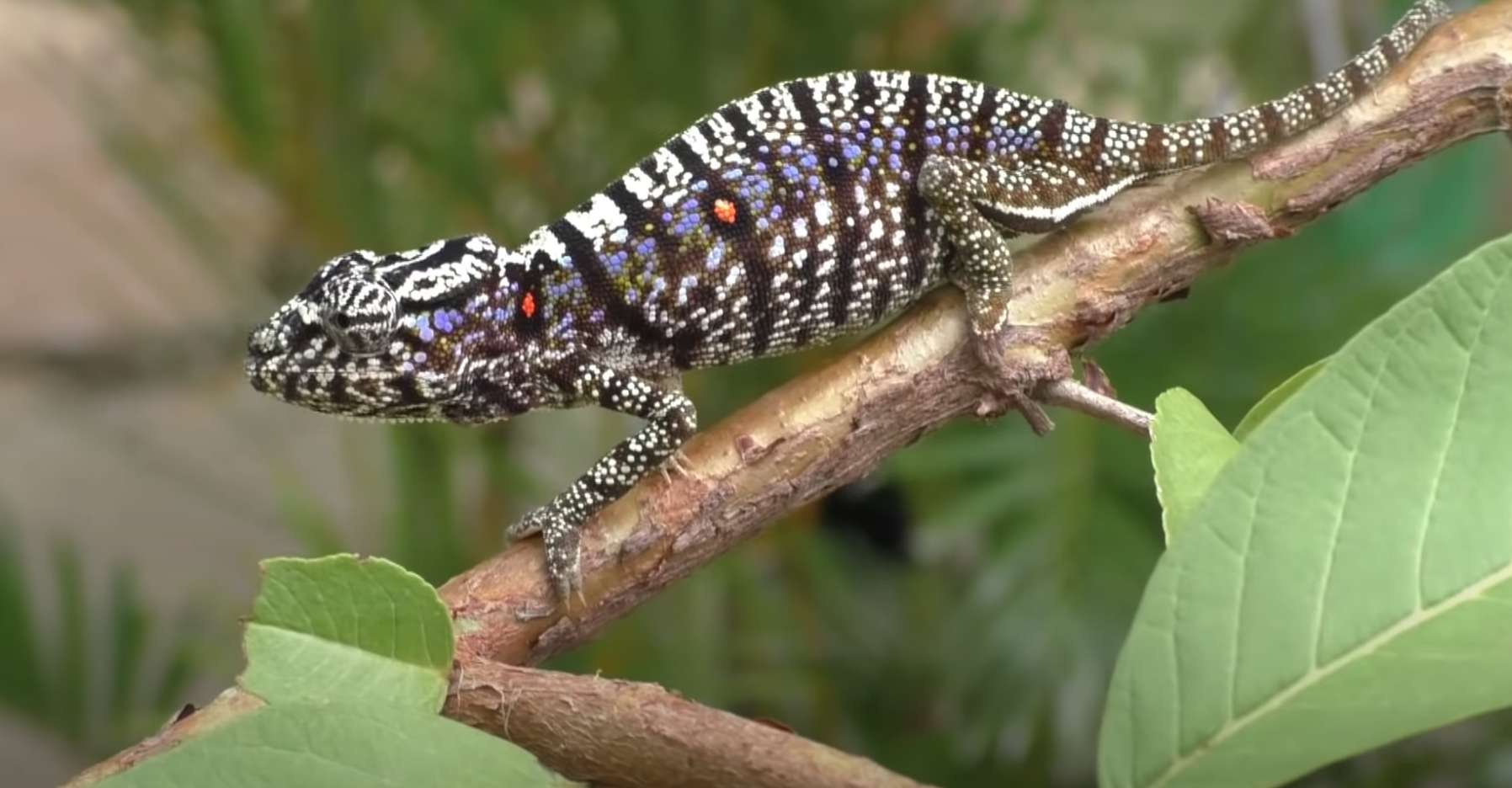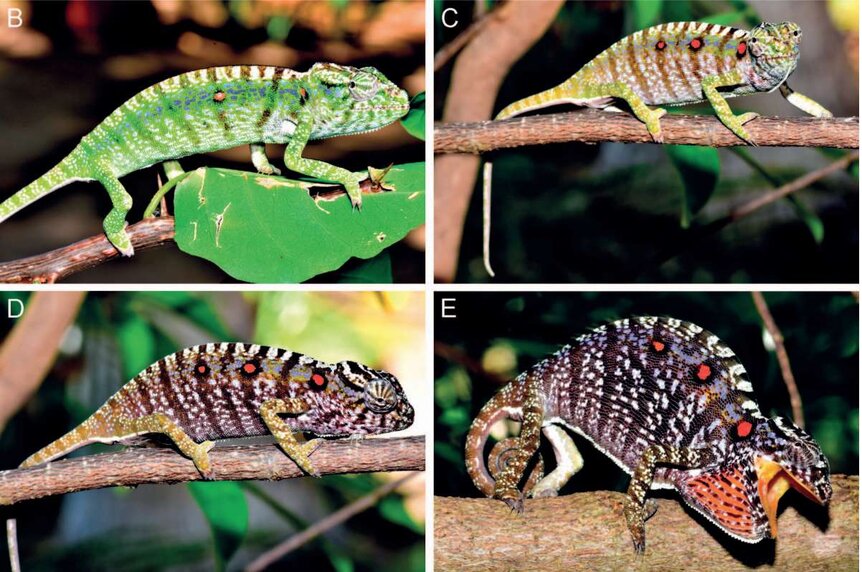Create a free profile to get unlimited access to exclusive videos, sweepstakes, and more!
Rare Madagascar chameleon makes a Rip Van Winkle-like reappearance after 100 years

Every day, the biodiversity of Planet Earth diminishes by an astonishing amount. According to a comprehensive 2007 survey conducted by 2,500 experts representing 130 countries at the U.N. Convention on Biological Diversity, we are currently experiencing the biggest extinction wave since the vanishing of the dinosaurs, with between 18,000 and 55,000 species disappearing every year.
So it's with great fanfare that a brightly-hued little chameleon making its home in Madagascar has triumphantly reappeared after a 100-year absence. Last week, biologists and conservationists announced the miraculous reemergence of the Voeltzkow's chameleon (Furcifer voeltzkowi) in the journal Salamandra.
This striking, color-changing creature sporting black-and-white striped skin accented with stunning orange-red dots and a long slash of purple was last seen back in 1913. Indigenous to the island of Madagascar, the rare lizard has been off the grid for over a century, and no living human being had ever seen a female of the species, until now.
"The Voeltzkow's chameleon adds color and beauty to the planet, and reminds us that even when all seems lost, a great adventure can rekindle hope even for species we haven't seen since Woodrow Wilson was president," said Don Church, the president of Global Wildlife Conservation. "Now we have so much to learn about this extraordinary reptile, including how we can best save it from extinction."
Global Wildlife Conservation bankrolled and led the original 2018 expedition into the forests of northwestern Madagascar in conjunction with its Search for Lost Species program. The goal was to present new discoveries to bolster interest in the conservation of those rare species unseen for more than a decade, but to also gain a better understanding of their individual habitats and ecosystems.
"I thought we might have a good chance of rediscovering Voeltzkow's chameleon, but I was surprised that it took so long and that it was so difficult," noted Frank Glaw, head of the Department of Vertebrates at the Bavarian State Collection of Zoology, who headed up the expedition. "Our efforts were entirely unsuccessful during most of the trip to find it where we thought it would most likely be."
In a stroke of good fortune, Angeluc Razafimanantsoa, a professional guide from Montagne d'Ambre, discovered one of the prized chameleons on one of the mission's final days. All total, Glaw and his team saw three males and 15 females.
These reclusive, thought-to-be-extinct chameleons were spotted climbing along tree branches on the grounds of a quaint hotel called Madame Chabaud in the sleepy village of Katsepy.
Females of the species are far flashier than the males. When in a relaxed state, girls display green with darker green stripes and orange-red spots along their sides. When stressed out, their dark green stripes become black and a vivid purplish streak emerges. Alternating within its black stripes, the female's skin turns white, except on their throats, which can flash a brilliant orange.
Female Voeltzkow's chameleons are slightly smaller than males, and as an adult, grow to roughly 5.9 inches long. Males measure approximately 6.5 inches long and present light green skin whose pigment reveals darker green stripes when alarmed or angry.
Mankind and nature so often do take away, but every so often they give back too. Welcome back Voeltzkow's chameleon!




























